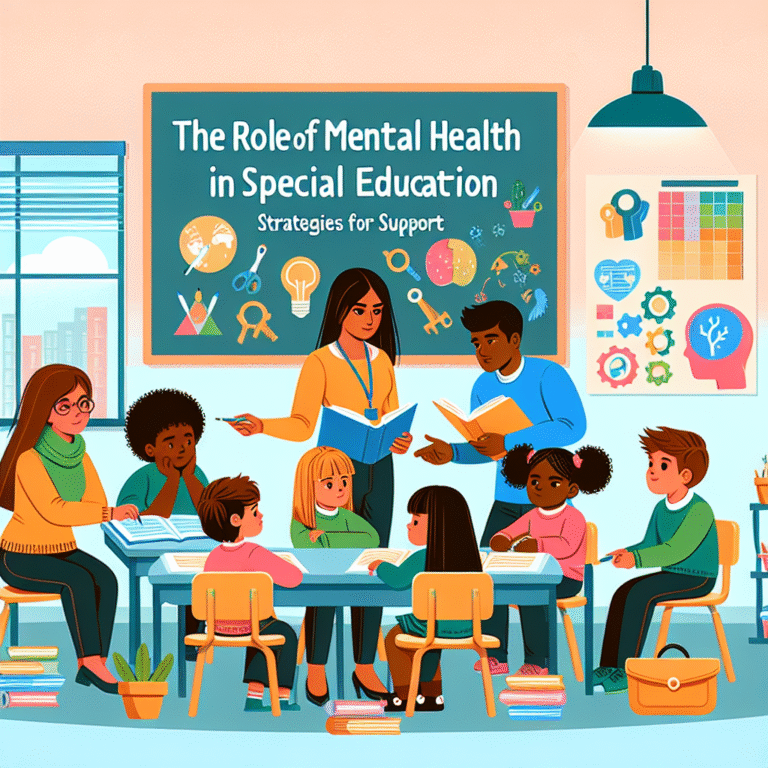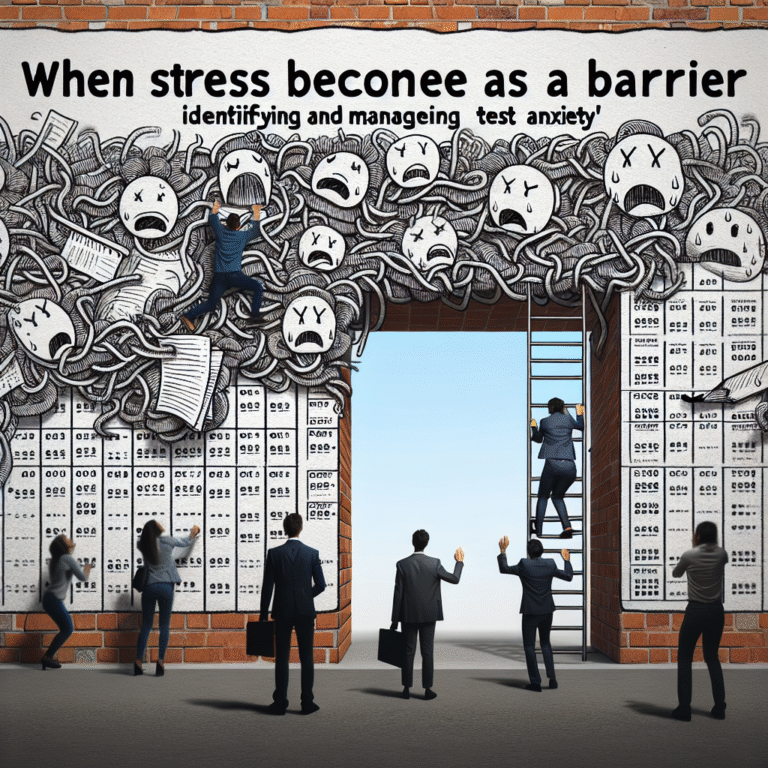
Introduction
In today’s fast-paced educational environment, students often find themselves overwhelmed by the demands of coursework and examinations. While traditional teaching methods have their merits, an increasingly popular solution has emerged: peer tutoring. This approach not only fosters collaboration and camaraderie among students but significantly enhances learning outcomes. So, how effective is peer tutoring? The answer lies in the inspiring Success Stories: Students Thrive with Peer Tutoring.
Peer tutoring is much more than simply helping a classmate with homework; it’s a transformative experience that promotes academic excellence, builds confidence, and cultivates essential life skills. In this article, we will explore compelling case studies and analytics, illuminating the profound impact peer tutoring can have on students’ academic journeys.
The Peer Tutoring Phenomenon
What is Peer Tutoring?
Peer tutoring is an educational practice where students assist one another in learning. It can take various forms, such as one-on-one sessions, group study, or structured programs facilitated by schools. The principle is rooted in the idea that students learn best when they engage actively with the material, and there’s no better way to do this than by teaching others.
The Psychology Behind Peer Tutoring
The concept of peer learning taps into several psychological theories, including social constructivism, which emphasizes the role of social interaction in cognitive development. When students explain concepts to their peers, they reinforce their understanding, increase retention, and develop critical thinking skills. This approach not only benefits the tutor but also the student receiving help, paving the way for mutual growth.
Case Study 1: High School Success Story
Background
At Lincoln High School, a diverse student population faced challenges with mathematics and science subjects. The administration implemented a peer tutoring program to address this issue, matching upperclassmen proficient in these subjects with struggling freshmen.
The Program Structure
The tutoring sessions were conducted after school, breaking down complicated concepts into digestible parts. Upperclassmen were trained to use effective teaching strategies, promoting patience, empathy, and clear communication—essential qualities for successful tutoring.
Results
Statistical data from Lincoln High School showed that students engaged in peer tutoring saw a 25% improvement in their standardized test scores. Furthermore, student feedback highlighted increased confidence and a greater sense of belonging within the academic community.
Analysis
This case study illustrates the profound impact an organized peer tutoring program can have on academic performance. By fostering supportive relationships and promoting consistent collaboration, students can thrive in their studies while developing valuable interpersonal skills.
Case Study 2: University Peer Tutoring Success
Background
At the University of California, Berkeley, a peer-led study group was formed for students enrolled in introductory biology courses, which historically posed significant challenges for freshmen.
The Program Structure
Facilitated by trained peer tutors who excelled in the subject, the program offered weekly meetings that included collaborative problem-solving exercises, exam preparation, and access to multimedia resources that enhanced the learning experience.
Results
Over two semesters, students participating in these peer-led study groups exhibited a 35% higher pass rate compared to their counterparts who didn’t participate. Additionally, surveys indicated that peer group members reported 50% more engagement in classroom discussions.
Analysis
This case at Berkeley emphasizes the importance of creating an environment where students feel safe to ask questions and express confusion. The success here demonstrates that when students support each other, barriers to understanding can be significantly reduced.
Benefits of Peer Tutoring
Academic Improvement
The most evident benefit of peer tutoring is improved academic performance. Studies consistently show that students engaged in tutoring programs often outperform their peers in various subjects, leading to higher grades and test scores.
Confidence and Self-Esteem
Success Stories: Students Thrive with Peer Tutoring frequently highlight an increase in student confidence. When students see improvements in their understanding and grades, their self-esteem receives an undeniable boost.
Communication Skills
Peer tutoring inherently involves communication—an invaluable skill in any field. Students learn to articulate their thoughts clearly, listen actively, and engage in constructive discussions, preparing them for future professional environments.
Social Connections
Peer tutoring fosters a sense of community within schools. Students who may have previously felt isolated find camaraderie, encouraging a more inclusive academic atmosphere.
Lifelong Learning Mindset
Students involved in peer tutoring often develop a growth mindset, recognizing that learning is a continuous journey. This perspective empowers them to seek help when needed and to help others in turn, perpetuating a cycle of academic support.
Implementing Peer Tutoring Programs
Key Steps for Success
-
Identify Needs: Assess the specific areas where students struggle academically, allowing for targeted tutoring programs.
-
Train Tutors: Equip peer tutors with teaching techniques, study methods, and communication strategies to make their tutoring sessions effective.
-
Create a Supportive Environment: Ensure that the tutoring setting is welcoming and conducive to learning.
- Measure Outcomes: Implement metrics to assess the effectiveness of the tutoring sessions, adjusting the program as necessary based on feedback.
Challenges to Consider
While peer tutoring has significant benefits, challenges such as mismatched skill levels between tutors and tutees, scheduling conflicts, and resistance from students needing help can arise. Addressing these challenges proactively is essential for successful program implementation.
The Role of Technology in Peer Tutoring
Online Platforms and Resources
With the rise of digital technology, many schools and universities are leveraging online platforms for peer tutoring. Tools such as Zoom, Google Classroom, and various educational apps allow for greater flexibility and accessibility, providing students with the opportunity to connect, irrespective of location.
Benefits of Online Peer Tutoring
- Wider Reach: Students can connect with peers from different grades or institutions.
- Resource Availability: Digital platforms offer multimedia resources that can enhance understanding.
- Recurring Engagement: Online sessions can be recorded, allowing students to revisit crucial concepts at their convenience.
Conclusion
The evidence is clear: Success Stories: Students Thrive with Peer Tutoring consistently demonstrate that peer tutoring is an essential educational tool. From fostering academic improvement to enhancing social skills, the multifaceted benefits of this approach highlight its value in modern education.
For educators and institutions looking to support student success, implementing a structured peer tutoring program could be a game changer. By creating a culture of collaboration and mutual support, we can help students navigate their educational journeys with confidence and resilience.
Actionable Insights
If you’re considering starting a peer tutoring program or participating in one:
- Explore: Research the specific needs within your academic community.
- Engage: Reach out and become involved, whether as a tutor or a tutee.
- Reflect: Analyze your progress and consider how you can continue to grow, both as a learner and as a mentor.
By embracing the ethos of peer tutoring, we can create an educational landscape where every student has the opportunity to thrive.
FAQs
1. What is peer tutoring, and how does it work?
Peer tutoring involves students helping each other learn through collaborative sessions, which can include one-on-one support or group study. Tutors help explain concepts, clarify doubts, and provide motivation.
2. How can schools implement a peer tutoring program?
Schools can start by assessing academic areas needing support, recruiting trained upperclassmen to serve as tutors, and creating a schedule that accommodates student availability.
3. What benefits can students expect from participating in a peer tutoring program?
Students can expect improved academic performance, increased confidence, enhanced communication skills, and the development of social connections with their peers.
4. Are online peer tutoring programs effective?
Yes, online peer tutoring platforms can be highly effective, offering flexibility and greater access to resources, thus expanding the reach of tutoring.
5. What challenges might arise during peer tutoring sessions?
Possible challenges include mismatched skill levels, scheduling conflicts, and initial resistance from students who may feel intimidated. Anticipating and addressing these challenges can facilitate smoother sessions.
By weaving together these narratives and insights, we can continue to celebrate the ongoing Success Stories: Students Thrive with Peer Tutoring, ensuring that future generations of students enjoy the benefits of collaborative learning.


















